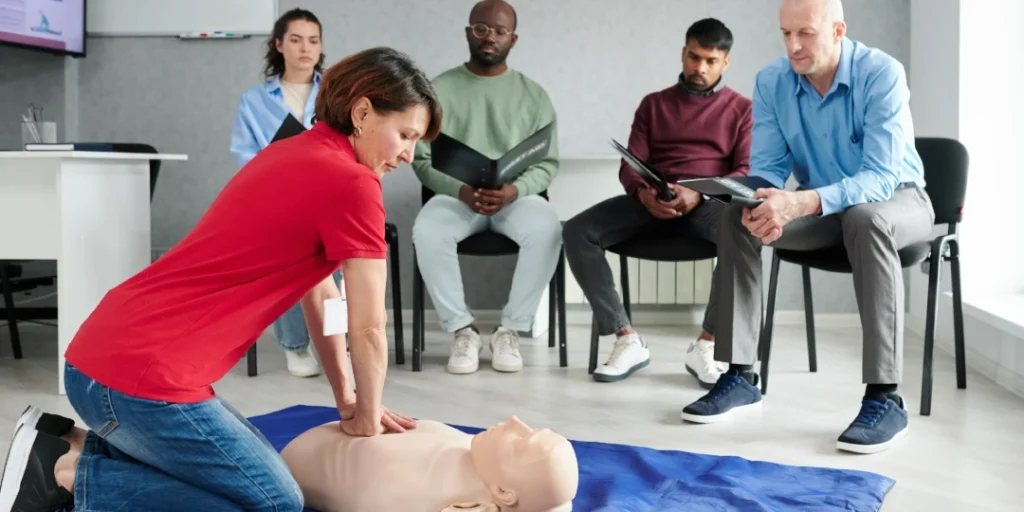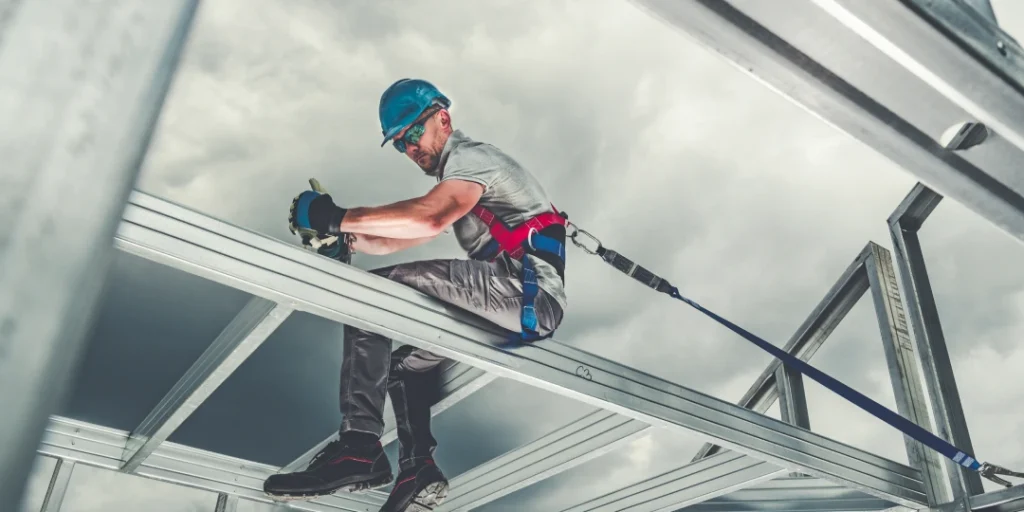Introduction: Why Fall Protection Matters in Nashville’s Fast-Growing Work Environments
Nashville is growing rapidly. From commercial high-rises downtown to residential developments on the city’s outskirts, cranes, scaffolding, and active construction sites have become a familiar part of the skyline. But with growth comes increased risk—particularly when it comes to fall hazards. Falls are among the most common causes of workplace fatalities in the U.S., and Tennessee is no exception. In Nashville’s booming industries, fall protection isn’t just a regulatory box to check—it’s a critical element of operational integrity and workforce safety.
In fast-paced environments where deadlines and budgets can overshadow safety planning, it’s easy for fall protection to become reactive rather than proactive. That’s where Fortier Loss Control provides a much-needed shift. They specialize in building comprehensive, forward-thinking fall protection strategies that protect lives while also promoting efficiency and compliance. Their work helps businesses move from “just getting by” to establishing a culture of safety leadership.
Fortier Loss Control’s approach to fall protection is hands-on, collaborative, and built to last. Rather than offering one-size-fits-all solutions, they take the time to assess each jobsite’s unique risks—whether in downtown Nashville or a regional warehouse. They address not only physical hazards, but also the gaps in training, processes, and protocols that often lead to preventable incidents.
Ultimately, their mission is simple: to help businesses keep their workers safe, their projects running smoothly, and their reputations intact. In Nashville’s dynamic construction and industrial sectors, partnering with Fortier isn’t just smart—it’s essential for long-term success and safety.
Understanding Fall Hazards: Where and Why They Occur
Fall hazards can appear in both obvious and unexpected places. On a construction site, they might involve elevated platforms, scaffolding, roof edges, or temporary access points. In a manufacturing or distribution environment, hazards may include mezzanines, loading docks, or open-sided workspaces. Even a misplaced ladder or an overlooked floor opening can become a serious risk if not addressed properly.
These hazards frequently stem from routine tasks—like cleaning gutters, performing equipment maintenance, or installing signage—making them deceptively easy to overlook. Workers become comfortable in their roles, and familiarity can lead to complacency. Slippery surfaces, poor lighting, and a lack of physical barriers are common contributors to fall-related incidents, particularly when combined with insufficient safety training or outdated equipment.
Fortier Loss Control works to uncover these risks before they result in injuries. Through detailed site evaluations and hazard analysis, their safety consultants identify both the visible and hidden dangers that pose threats to workers. They assess walking-working surfaces, review equipment use, and analyze work patterns to recommend practical, compliant interventions that significantly reduce the potential for injury or loss.
More importantly, Fortier doesn’t stop at identifying hazards—they help clients prioritize and remediate them in ways that align with their operational goals. Whether recommending structural changes, new PPE policies, or team-wide training, Fortier helps businesses create environments where fall risks are consistently recognized, addressed, and minimized.
Nashville Industries Most at Risk for Fall-Related Injuries
While fall hazards exist in nearly every workplace, certain industries in Nashville face a disproportionate share of the risk. The construction sector is especially vulnerable, given the city’s ongoing expansion in both residential and commercial real estate. Framing crews, roofers, and steelworkers frequently perform tasks at height—and often under pressure to meet tight deadlines.
In addition to construction, a wide range of industries experience frequent fall-related incidents. Telecommunications technicians, for example, may work on cell towers, poles, and high platforms, while utility workers face risks during inspections and repairs. Building maintenance professionals are exposed to fall hazards when cleaning windows or servicing equipment on rooftops. Even inside distribution centers and warehouses, falls from ladders, loading docks, and conveyor belts remain a daily concern.
Other high-risk professions include commercial painters, who work from lifts or suspended scaffolds, and HVAC technicians who frequently access rooftops and confined mechanical spaces. Each of these roles presents unique challenges—yet all require the same fundamental commitment to fall protection.
Fortier Loss Control is deeply experienced across these sectors. Their team understands the specific hazards, workflows, and regulatory obligations that define each environment. Whether working with a roofing contractor in East Nashville or a logistics company in Antioch, Fortier delivers industry-informed solutions that align with both OSHA and TOSHA standards—helping clients meet compliance while safeguarding their crews.
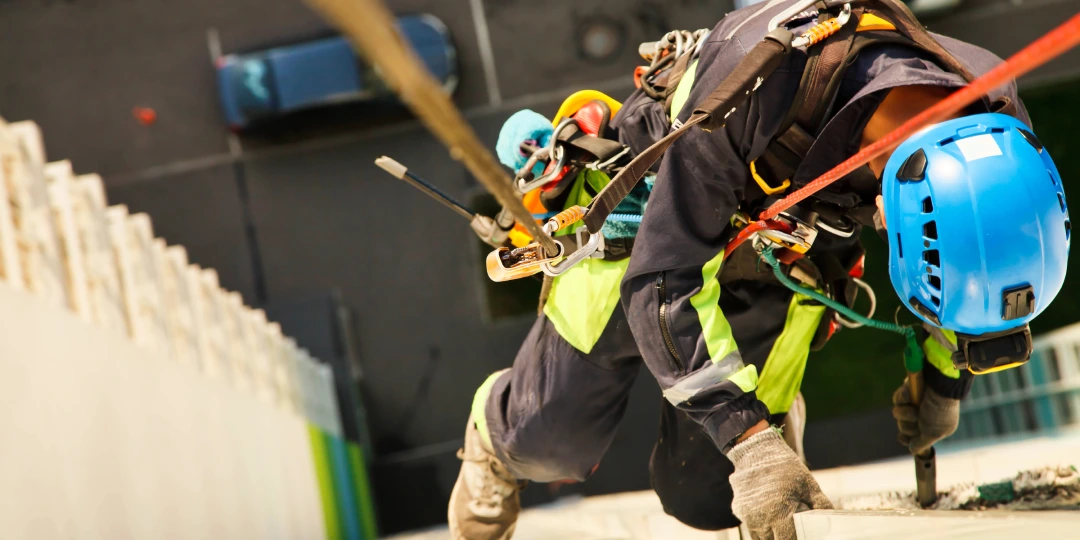
OSHA Fall Protection Standards: What Nashville Employers Need to Know
Navigating OSHA’s fall protection regulations can feel overwhelming—especially for employers balancing multiple job sites, shifting project timelines, and diverse crews. Yet understanding and applying these standards is critical, both for protecting workers and for avoiding costly penalties. At Fortier Loss Control, helping Nashville-area businesses achieve full compliance with federal and state safety requirements is a cornerstone of their service.
For construction, the applicable OSHA standard is 29 CFR 1926 Subpart M, which mandates fall protection for employees working at elevations of 6 feet or more. In general industry, the standard falls under 29 CFR 1910 Subpart D, where the trigger height is just 4 feet. This distinction matters—especially for employers overseeing both construction and facility-based operations. Misapplying one standard to the other is a common compliance pitfall.
The standards also specify which types of fall protection are required for different situations: guardrails for unprotected edges, safety nets where active systems aren’t practical, and personal fall arrest systems (PFAS) for elevated tasks with greater mobility. These must all meet OSHA’s technical criteria for strength, spacing, anchorage, and inspection. In Tennessee, compliance with TOSHA—the state’s OSHA-approved plan—adds an additional layer of accountability, especially during inspections.
Fortier Loss Control works closely with employers to ensure not only that the right fall protection equipment is in place, but that it’s being used correctly, maintained regularly, and supported with written safety policies and training documentation. Their consultants also provide pre-audit walkthroughs, compliance checklists, and training aligned with the latest OSHA guidance, helping businesses avoid violations while creating safer work environments for everyone on site.
Key Components of a Fall Protection Plan
A comprehensive fall protection plan is more than a set of rules—it’s a living framework that guides how fall hazards are identified, managed, and eliminated on every job site. At Fortier Loss Control, fall protection planning is a proactive process built around real-world challenges and tailored to each company’s operational environment. Their goal is simple: to help Nashville employers implement fall safety protocols that are not only compliant, but practical and effective in the field.
The foundation of any fall protection plan begins with a written policy. This document outlines company-wide procedures for working at height, equipment usage, rescue operations, and hazard communication. It must clearly assign responsibilities, detail enforcement methods, and reference applicable OSHA and TOSHA standards. Fortier helps clients craft these policies from scratch or refine existing ones to meet updated regulations and evolving site conditions.
Equally important is a thorough fall hazard assessment. This involves identifying all areas where employees could be exposed to falls—whether from rooftops, scaffolding, unguarded openings, elevated platforms, or portable ladders. Fortier’s safety experts perform detailed walk-throughs and risk evaluations, ensuring no potential danger goes unnoticed. These assessments are then used to determine the appropriate combination of active and passive protection systems, such as harnesses, guardrails, covers, or anchor points.
A truly effective fall protection plan also includes ongoing training, inspection routines, and emergency rescue procedures. Workers must be trained on proper equipment use, fall arrest techniques, and how to respond in the event of a fall. Equipment must be routinely inspected for wear and damage, and rescue plans must be in place to ensure rapid, safe retrieval. Fortier Loss Control equips clients with the tools, templates, and expert guidance to execute each of these components confidently—creating a fall protection program that stands up to scrutiny and keeps crews safe.
Common Violations and How Fortier Helps You Avoid Them
Despite the availability of fall protection equipment and clear regulatory standards, fall protection violations remain among the most frequently cited OSHA infractions year after year. For Nashville-area businesses operating in high-risk environments, overlooking even small compliance details can lead to serious injuries, hefty fines, and operational delays. Fortier Loss Control helps employers recognize and address these vulnerabilities before they become liabilities.
Some of the most common violations include the failure to use fall protection when required, especially on residential construction sites or during short-duration tasks where workers assume they can “get by” without safety equipment. In other cases, employers may provide fall protection gear but fail to train workers on proper usage, rendering the equipment ineffective and putting lives at risk.
Improper anchorage points, defective or expired harnesses, and missing or incomplete fall protection plans are additional violations that routinely appear on OSHA inspection reports. Without proper oversight, companies may also fail to enforce fall protection policies consistently—leaving crews vulnerable and exposing the organization to legal and reputational damage.
Fortier Loss Control provides site-specific compliance audits and corrective action plans designed to uncover these issues before they escalate. Their team performs walkthroughs, equipment evaluations, and documentation reviews to help clients close the gaps. They also offer on-site training, policy writing assistance, and mock inspections to prepare organizations for OSHA or TOSHA visits. With Fortier’s support, Nashville employers can go beyond minimal compliance and build a fall protection culture that’s both defensible and durable.

Personal Fall Arrest Systems (PFAS): Features, Fit, and Function
A Personal Fall Arrest System (PFAS) is a vital component of any effective fall protection strategy—but simply wearing a harness isn’t enough. For a PFAS to function properly and protect workers from serious injury or death, it must be selected correctly, fitted precisely, and maintained regularly. At Fortier Loss Control, training on PFAS is hands-on and comprehensive, helping Nashville employers ensure these systems provide the safety they’re designed to deliver.
A typical PFAS includes three critical components: the full-body harness, a connecting device such as a shock-absorbing lanyard or self-retracting lifeline, and a secure anchorage point. Each part must be compatible, rated for the load, and properly used for the specific job task. A misused or mismatched system can lead to failure in the event of a fall—making education and supervision essential.
Proper fit and adjustment are equally important. A harness that’s too loose can result in severe injuries during a fall, including suspension trauma or internal damage. Fortier’s safety consultants train teams on how to inspect and fit harnesses to ensure shoulder straps, chest straps, and leg straps are snug but not restrictive. They also guide employers on anchor point selection, which must meet minimum OSHA load-bearing standards (typically 5,000 pounds per employee attached).
Maintenance is the final, and often overlooked, pillar of PFAS effectiveness. Harnesses and lanyards should be visually inspected before each use and formally inspected by a competent person at regular intervals. Fortier Loss Control helps companies implement proper inspection logs, replacement schedules, and safe storage protocols—ensuring that PFAS gear remains in top condition and compliant with ANSI Z359 standards.
Guardrails, Covers, and Safety Nets: Passive Fall Protection in Action
While active systems like harnesses and lanyards require individual compliance, passive fall protection solutions offer a built-in layer of safety that protects all workers—regardless of experience, awareness, or task urgency. At Fortier Loss Control, passive systems are emphasized as the first and most reliable line of defense against fall-related injuries, particularly in Nashville’s busy construction and industrial sectors.
Guardrails are among the most widely used and effective passive measures. Whether installed along elevated walkways, roof edges, mezzanines, or open-sided platforms, guardrails physically prevent workers from reaching dangerous drop-offs. Fortier helps businesses evaluate where permanent or temporary railing systems can be used to enhance safety while maintaining workflow efficiency. Their team ensures that guardrails meet OSHA height, strength, and design requirements—typically standing 42 inches tall with mid-rails and toe boards as needed.
Covers are another critical form of passive protection, especially in environments where floor holes, skylights, or open shafts are present. Falls through unprotected openings can be just as devastating as those from unguarded edges. Fortier Loss Control assists clients in identifying and marking all such hazards, then implements durable, clearly labeled, and properly secured covers that meet OSHA’s deflection and visibility standards.
In larger-scale construction environments, safety nets may be deployed when guardrails or personal fall arrest systems aren’t feasible. These nets catch workers before they hit the ground and are especially useful in bridge work, high-rise framing, or during steel erection. Fortier advises on when nets are most appropriate and ensures they are installed at correct heights and clearances, as defined by OSHA’s 1926.502(c) regulation.
Because passive systems reduce the potential for human error, they offer one of the most effective ways to build a culture of safety from the ground up. Fortier Loss Control incorporates these solutions as a core part of its fall protection strategies—ensuring that Nashville businesses don’t just respond to accidents, but prevent them altogether.
Training and Education: Building a Culture of Safety on Every Jobsite
Even the best fall protection equipment and policies are only effective if workers understand how—and why—to use them. At Fortier Loss Control, training is not just an obligation; it’s a cornerstone of building a sustainable, proactive safety culture across job sites in Nashville and beyond. Their approach emphasizes more than technical instruction; it fosters awareness, responsibility, and safety-minded behavior at every level of an organization.
Fortier offers comprehensive OSHA-authorized fall protection training programs tailored to construction and general industry needs. These sessions are designed for all experience levels, from new hires to seasoned crew leaders, and include both classroom learning and practical, hands-on demonstrations. Workers learn how to identify fall hazards, properly use and inspect personal fall arrest systems, understand guardrail requirements, and respond to fall-related emergencies.
For those in supervisory roles, Fortier provides Competent Person and Qualified Person training, empowering leaders to oversee job site compliance and implement corrective actions in real time. These courses ensure that on-site decision-makers are equipped with the technical knowledge and legal awareness needed to manage fall protection effectively and in accordance with OSHA 1926 and 1910 standards.
To keep safety top-of-mind, Fortier also conducts toolbox talks, field coaching, and refresher trainings that are specific to current tasks or emerging risks on each job site. This ongoing education reinforces safe behavior, corrects bad habits, and keeps crews engaged and accountable. The result is not just compliance, but a cultural shift—where safety becomes second nature, and every worker plays a role in protecting their team.
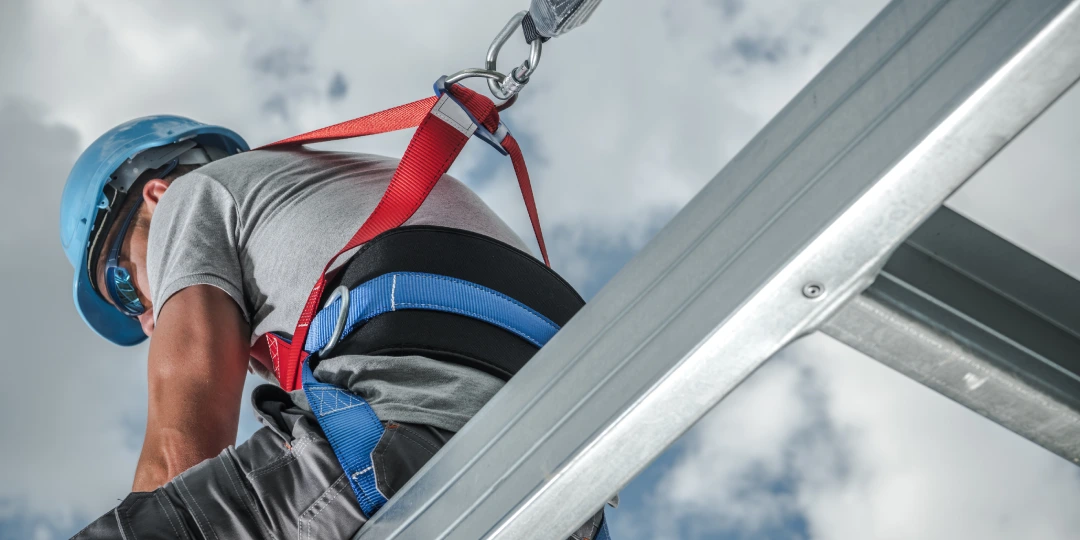
Frequently Asked Questions
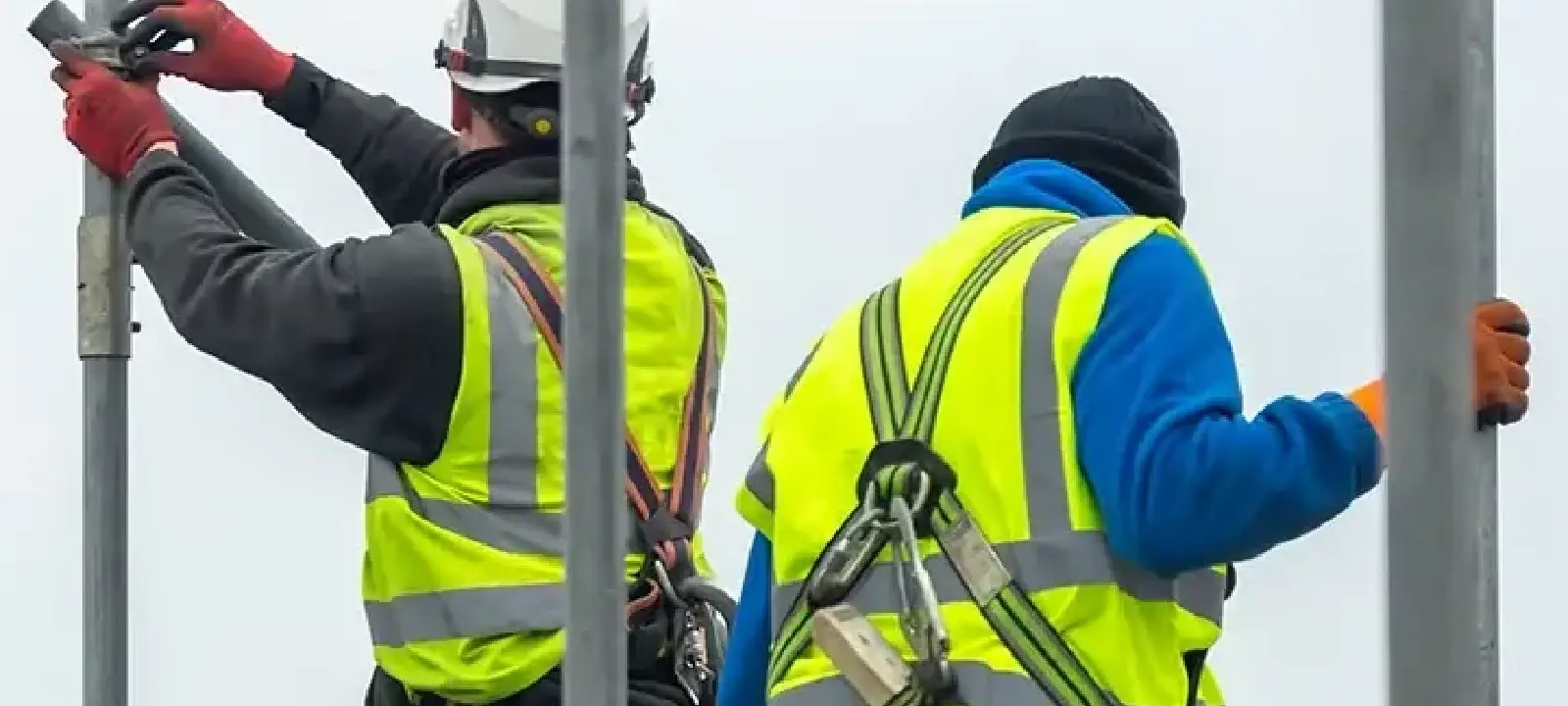
Conclusion: Partnering with Fortier for Safer, Smarter Workplaces in Nashville
In a city like Nashville—where construction projects, industrial growth, and infrastructure upgrades show no signs of slowing—fall protection isn’t just a safety requirement; it’s a strategic imperative. Workplace falls are preventable, but only with a proactive, well-informed approach rooted in expertise, training, and a culture of accountability. That’s exactly what Fortier Loss Control delivers.
Fortier doesn’t believe in one-size-fits-all solutions. Their work is grounded in the real conditions and daily pressures that Nashville employers face. From scaffolding safety to rooftop access, from training to equipment audits, Fortier empowers businesses to move beyond reactive compliance and embrace sustainable, measurable fall prevention strategies that save lives and strengthen operations.
For companies large and small—whether you’re managing a construction crew in Germantown, overseeing a manufacturing plant in Antioch, or maintaining facilities in Brentwood—Fortier becomes more than a consultant. They become a trusted extension of your safety team, providing ongoing guidance, support, and compliance assurance as your operations evolve.
Don’t wait for an accident to make fall protection a priority. Contact Fortier Loss Control today to schedule a customized assessment or training session—and build a safer, smarter future for your team and your jobsite.

